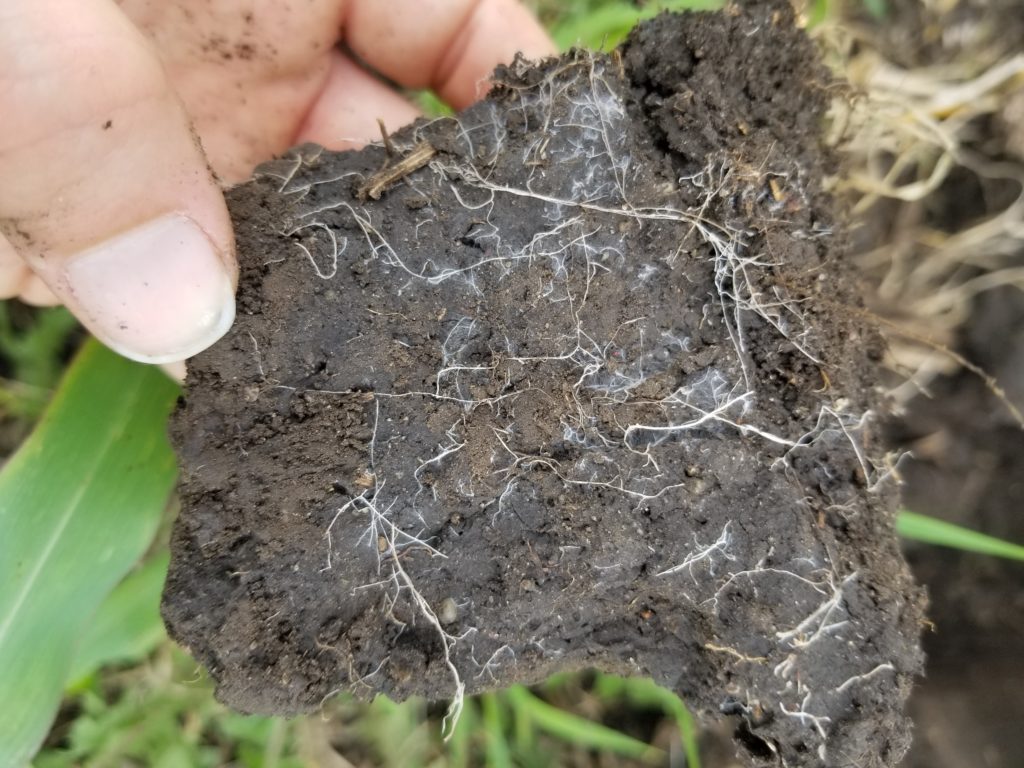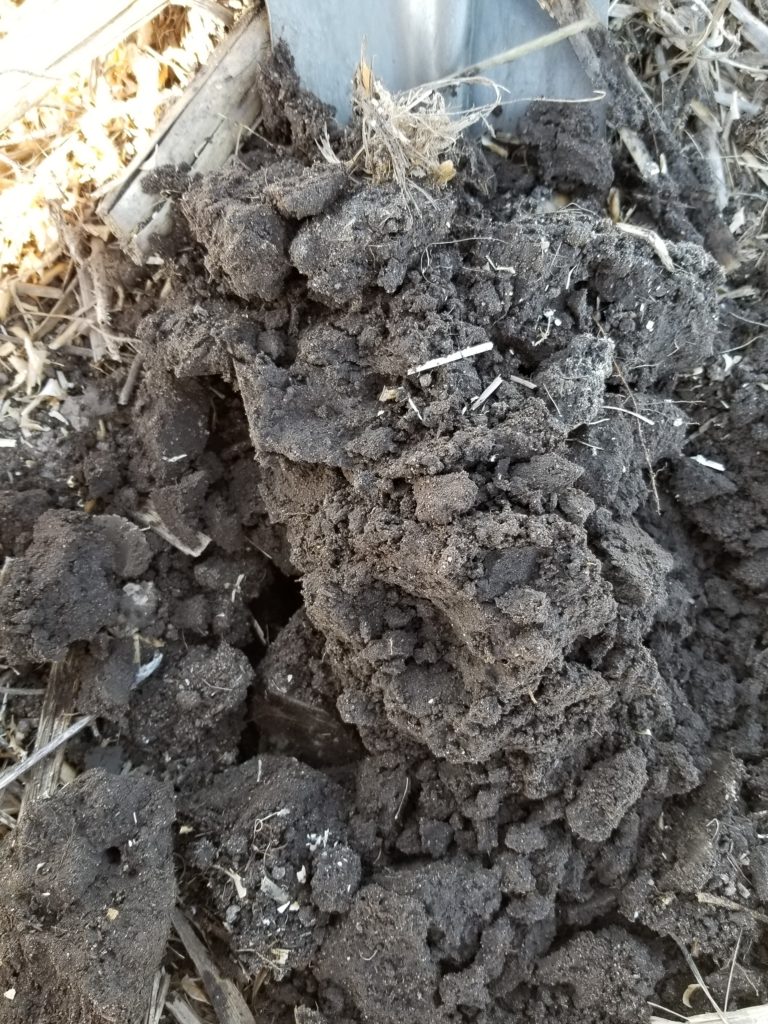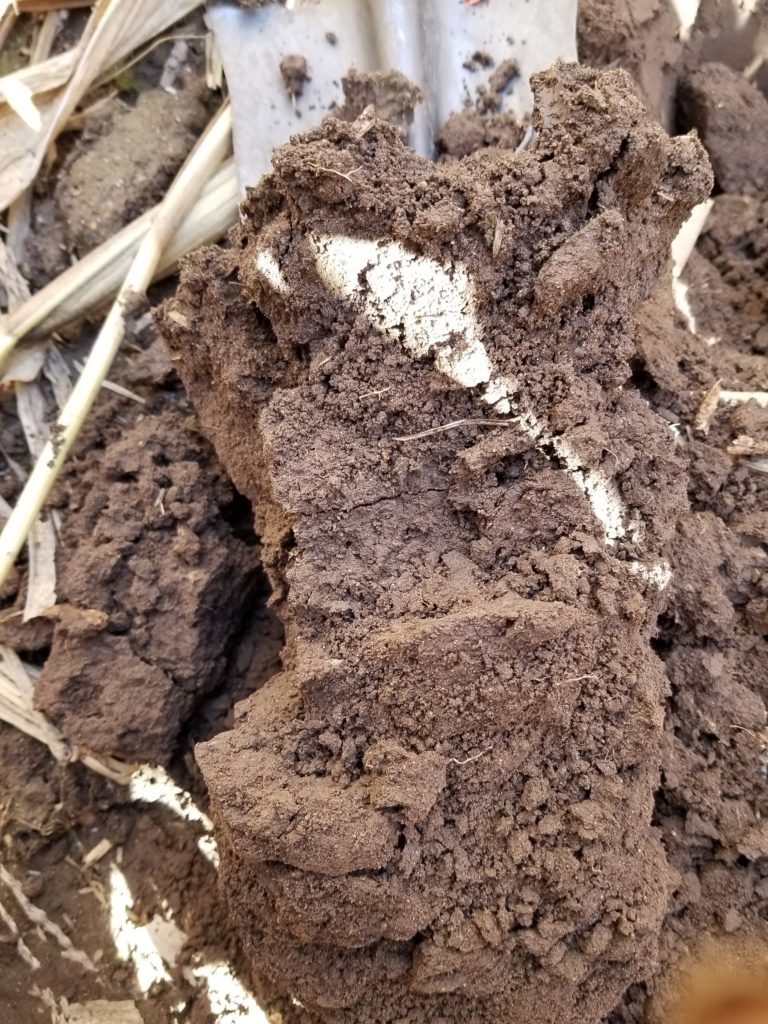I really enjoy taking a shovel out in a field and learning from what I find. There are numerous tests you can use to measure your soils which are great at getting baselines and tracking changes. An easy way to see change is by just digging a spadeful of soil and taking a look at it. The soil on the left shows the building of organic matter. The light brown is the color of the soil when it was obtained by the current farmer. The organic matter was depleted, it was farmed in a way that did not build the soil biology, didn’t offer diversity, protection of the soil, or many living roots. Over the years of converting to a no-till system and incorporating cover crops, we are able to see the soils changing. The darker areas are where there is an increase in soil organic matter, the roots of the cover crops are heavier in those areas because of the increase in nutrient availability and building of soil structure. This soil has not been tilled recently so the difference in colors isn’t due to mixing of the soil, this is the building of soil.

The pictures below are of the same soil type, farmed the same by one producer. Over time, the chisel plow and disk were used less and vertical till was used in it’s place. With the wet falls, the soil on the top was left without any fall tillage. The farmer was questioning whether any positive progress was made by this management. Soil structure is beginning to form in the sandy loam soil that was soybeans and corn the previous year. The picture on the bottom was in corn and was soybeans the year prior. Compaction was reduced by 50-75 psi and water infiltration was increased by 3inches/hour with the reduction of fall tillage, soil on the right. Yields will be monitored this fall to determine if agronomic drags are found.


